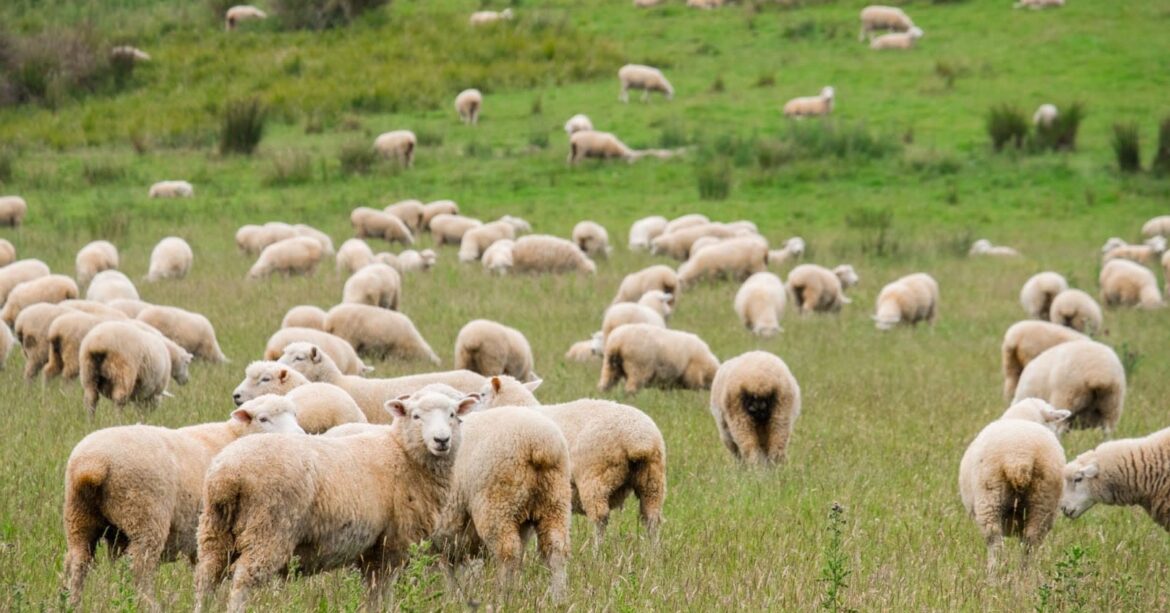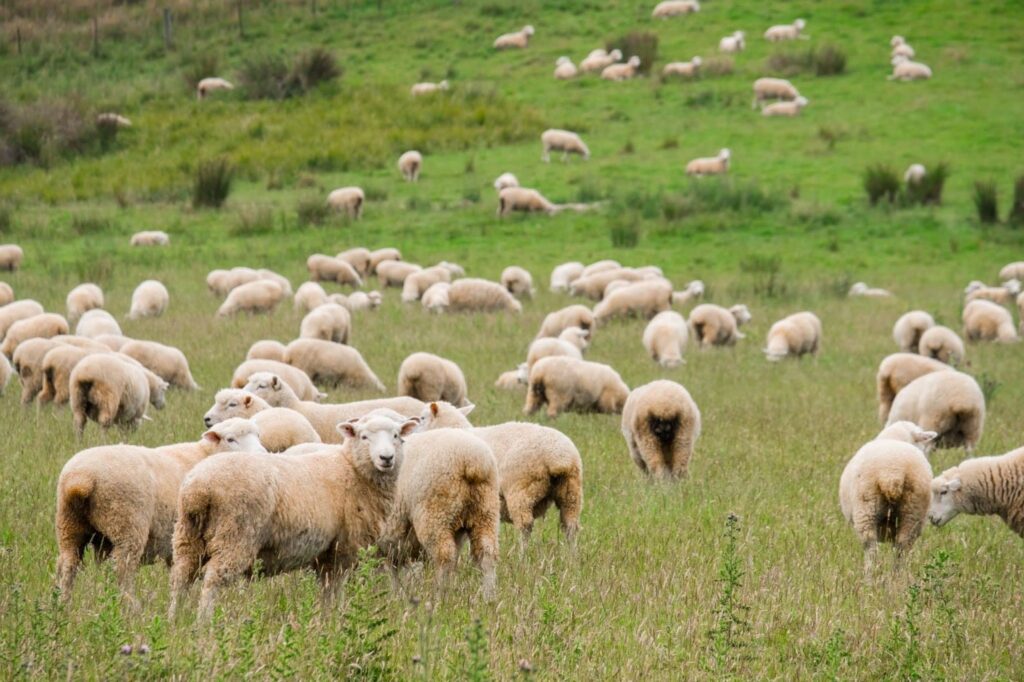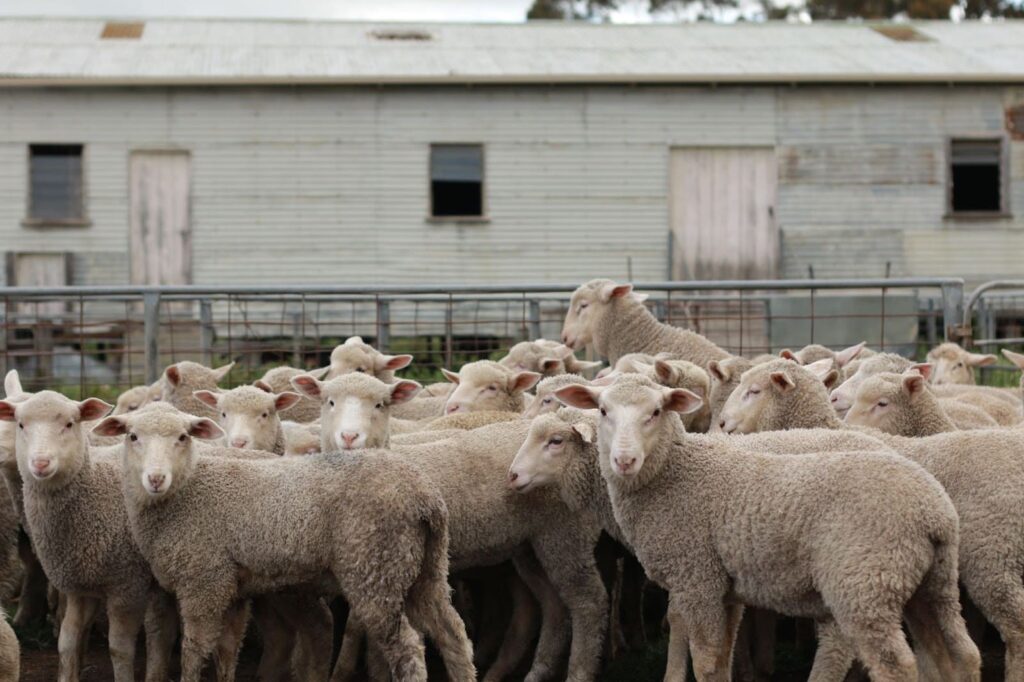What is the Best Fodder for Sheep?
Pasture is the best choice for feeding sheep. However, not all pasture is of the same quality. Hobby farms often have poor-quality pasture, which is not ideal. Whereas commercial sheep farmers tend to have “improved” pasture in place to provide good quality sheep fodder. This improvement involves the use of species that may not be native, but that grow successfully and are palatable to sheep.
Key points
- Pasture is the best choice for feeding sheep, and the quality of the pasture is a decisive factor in ensuring the health and well-being of the animals.
- Good quality pasture usually consists of 70% legumes, 30% grass, and potentially some herbs and clover.
- Temperate grasses like ryegrass, cocksfoot, and phalaris are most often used, with tropical grasses like digit grass, rhodes, kikuyu, and paspalum also being potentially useful.
- If pasture is not sufficient to provide the nutrients and energy required, sheep farmers use supplementary feed such as grain, hay, or silage.
These species include clovers, ryegrasses, and other types of grasses. If this type of pasture is in short supply at certain times of the year, there may not be sufficiently high protein present for sheep to maintain their required body weight. It’s at times like this that farmers employ supplementary feeding to boost the protein content that their sheep receive.
Let’s take a closer look at the high-palatability fodder that is provided in pastures and what supplementary feeding entails.
Grazing pastures for sheep
Usually, sheep graze on lower pastures than cattle because it takes them less time to overgraze. To ensure good pasture is available, farmers use dense species to accommodate for the low grazing habit of sheep. Using varieties of grass that grow densely is also useful because sheep often remain in pasture for a significant length of time.
Most often, temperate grasses like ryegrass, cocksfoot, phalaris, and tall fescue are used in sheep pastures. However, some tropical grasses like digit grass, rhodes, kikuyu, and paspalum can also be a useful addition.
Grass is not the only essential feature of sheep pasture. In fact, it should make up only around 30% of the total pasture, with the rest consisting of legumes and a small selection of herbs like chicory. In general, sheep have a preference for legumes, and they do not suffer from bloat in the way that cattle do.
There are times of the year when there are high levels of dry matter in pastures and when ground cover is reduced. These conditions tend to be prevalent during later summer, autumn, and early winter. At times when these conditions are present, pasture is not sufficient to provide the necessary energy protein to promote sheep health and weight gain. This insufficiency leads to farmers using supplementary feeds to ensure that the health and growth of sheep are maintained.
Supplementary feeding for sheep
Pasture undergoes periods of growth and periods of dormancy. During late summer, autumn, and early winter, this may mean that the quality of the pasture is not sufficient to sustain the health and well-being of the sheep. If this is the case, sheep farmers introduce supplementary feeding. This supplementary feed normally consists of grain, hay, or silage.
Aside from the health and well-being of the sheep, there are several reasons for supplementary feeding including:
- Protection of ground cover to control erosion levels.
- Improvement in the use of dry pasture.
- Maintenance of a good level of meat or wool production.
- Reduction in the pressure from grazing on pastures.
- Prevention of the excessive loss of liveweight for pregnant ewes and weaners.
A closer look at the energy requirements of ewes and weaners
It’s clear that supplementary feeding may be necessary to meet the energy needs of pregnant ewes and weaners and prevent excessive loss of liveweight. In the case of ewes, their energy requirements increase slowly at the start of the pregnancy and more dramatically as the pregnancy progresses. When a ewe is in late pregnancy, it needs a diet that contains more than 15% crude protein.
Weaners also require a high level of protein that is fed daily to maintain a sufficient amount of weight. Normally, producers expect weaners to grow at least 50 grams each day. For Weaners that are due to be switched off for slaughter, growth should be at least 150 grams each day with many producers aiming for a growth rate of 250 grams each day. For weaners weighing less than 20kg to attain an acceptable growth rate, they require at least 15% protein in their supplementary feed. For weaners weighing more than 20kg, the required protein level is 12.5%.
Combining good quality pasture grazing with supplementary feeding, when necessary, reduces the risk of hungry sheep. It also ensures that sheep receive the protein they need to remain healthy and in good condition. This is essential in promoting the required weight gain when finishing a lamb for slaughter or preparing weaner ewes for breeding. It also promotes wether growth in breeds such as merinos.
2 - 2Shares



